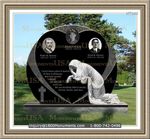|
Designing A Memorial Ceremony And Saying Final Words
When a loved one dies, the funeral ceremony offers a formal way of saying goodbye. These services can often be personalized in order to reflect the individual's life. You can find help through the personnel at the mortuary who prepare the body.
When planning the service, consider the music you will use. You may opt for live music, through voice or instruments. Other options include the use of recorded music, which is growing in popularity.
There is usually a eulogist or officiant for the service. This person may be a clergy member, family friend or even a member of the family. The family is generally responsible to communicate with the individual in planning the service. In some cases, families need help in contacting a person who can do this job. Most mortuaries offer assistance. Keep in mind that some religious ceremonies may include specifics as to what is included in the services.
Often the individual may have been a part of a fraternal organization or served in the military. Such groups may be invited to take part in the service. Some have specific types of services, specific to their organizations. Veterans groups may offer the final playing of taps, salute to the deceased (21 gun), and present a flag to the family.
The decision to have a viewing before or after the service is at the digression of the family. In some locations, the viewing is considered traditional, while in others it is not. Regardless of local tradition, the family has the final say in these regards.
The process of saying goodbye is difficult. For many, it is an important part of the process of grieving the loss. If possible, talk with loved ones before their death to determine what they want in terms of a funeral ceremony. This makes it easier to plan a service you know your lost loved one would approve.
|
|



























